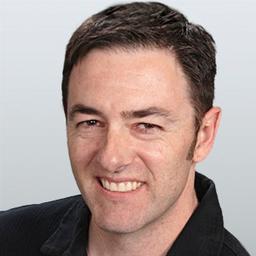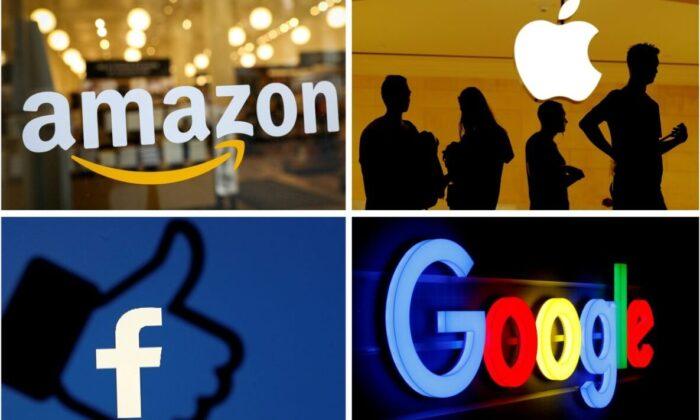- The newest iteration of “Blue’s Clues,” courtesy of the show’s YouTube channel, featuring “RuPaul’s Drag Race” star Nina West singing about diverse family structures, including those with trans and gay parents as well as nonbinary ones, i.e. identifying as neither male nor female.
- Netflix’s animated series “She-Ra and the Power of Princess” featuring gay, transgender and nonbinary characters
- Cartoon Network’s animated “Steven Universe” (whose hero’s superpowers come from his belly button) touching on gay and trans issues, along with a subplot involving a same-sex wedding.
- The YouTube series “Too Loud,” part of NBCUniversal’s Peacock Kids channel, featuring a main character coming out as a trans girl during the show’s second season.
- DreamWorks Animation’s “Madagascar: A Little Wild,” a series on both Peacock and Hulu, featuring an LGBTQ Pride-themed episode along with a new, nonbinary character, Odee Elliot, voiced by nonbinary actor Ezra Menas.
Parents and activists who endorse today’s message-laden TV fare say it continues the didactic mission of classic kids shows such as “Sesame Street” and “Mr. Rogers’ Neighborhood” by teaching the eternal values of kindness and empathy in a modern setting.
But other parents and conservative activists aren’t having it. “Modern entertainment in no way reflects Mr. Rogers’ lessons of being a good person,” says Julie Gunlock, the Center for Progress and Innovation director for the conservative-oriented Independent Women’s Forum.
“Children don’t need to be learning about sexuality from either perspective, like same-sex attraction or gender identity,” says Emilie Kao, director of the Richard and Helen DeVos Center for Religion & Civil Society at the Heritage Foundation. “They’re not at an age where sexuality is appropriate for them ... or they’re even interested in it.”
Creators on either side of the ideological spectrum aren’t keen on discussing or defending the material in question or its influences. RealClearInvestigations reached out to multiple platforms including Nickelodeon, Netflix, the Sesame Workshop and others to learn more about the creative choices behind the programming. None responded.
“Clearly, Hollywood is all about promoting the queer and gender theory agenda,” she says.
Some storytellers have opened up to select outlets, but not about the objections some might have to embedding woke messages into entertainment for impressionable children.

“My goal with the show was to really tear down and play with the semiotics of gender in cartoons for children because I think that’s a really absurd idea that there would be something radically different about a show for little girls versus a show for little boys,” she said.
“The impression is, this is how the rest of the world thinks,” says Winter, adding that the messaging his group sees leans primarily to the left.

Gunlock agrees, arguing conservatives are hopelessly outnumbered in this cultural fight.
“The left owns everything having to do with entertainment … music, movies, TV, fashion, magazines, TV talk shows, morning TV, etc. There’s just no way in,” says Gunlock, whose group promotes limited government, economic liberty and personal responsibility.
She says today’s children’s programming does more than insert socially aware themes into shows. It consciously tries to “redefine the family beyond mom, dad, siblings.”
“Some shows for very young children are still wholesome and worth watching,” Gunlock says, citing “The Berenstain Bears.” “Many promote content I don’t want my kids hearing about or gross behavior I don’t want my kids to mimic.”
But Susan Markham, a partner with Smash Strategies, an agency dedicated to gender equity and women’s empowerment, argues that television can teach children about complex issues at a younger age because they grasp much more than adults often give them credit for, allowing screenwriters unlock ways to explore issues at appropriate age levels and help them “base their value systems around them.”
Yet message-laden storytelling may not be as effective as its creators hope, says Amy Franzini, an associate professor at Widener University who studies the intersections between children, parents, and the media.
Franzini says much depends on the characters presenting the message, the message itself and how often the themes are repeated. Those factors influence retention level, and a heavy-handed approach can backfire.
“Sometimes implicit messaging can be more successful than explicit, especially for older children,” says Franzini, who adds most children’s media outlets have “advisory boards” to ensure programming is fit for the intended viewers. “[Young audiences] don’t want to be lectured to.”

“We don’t really understand the influence it’s having,” adds Goldstein, a faculty member at the University of Utah School of Medicine.
Meg Akabas, a council member and past chair of the National Parenting Education Network, says some children are mature enough to tackle challenging material in their entertainment. Others aren’t, though, making it a parent’s duty to determine the right age to process select themes.
Child reactions can range from curiosity to discomfort, while some will miss the messages entirely, Akabas says. That’s where an engaged parent enters the picture.
“Let children know they can ask questions, and that you will keep them safe,” she recommends. “Then answer in the simplest terms possible and see if they have any follow-up questions. They’ll let you know what they want to know.”
Some parents don’t mind children’s TV espousing certain views, particularly stories touching on race relations.
“If there is a slant to the programming I don’t agree with, I discuss with my kids why we are not going to watch it. And then we find programing that we feel is appropriate for our family,” Garska Rodriguez says. “There are a lot of influences competing for our attention and our children’s attention, so it’s our job as parents to sort through the noise.”
Toward that end, Gunlock recommends parents visit Common Sense Media, a comprehensive website detailing the amount of violence, sexuality and profanity in a given show or film.
Gunlock also recommends parents either “actively check in” with what their children are watching or just steer clear of modern kid’s programming entirely to ensure young ones don’t get politically charged messaging.
Kao says conservatives should always be involved in every area of society, including making creative content. But that doesn’t mean she advocates a GOP-slanted animated series.
“I don’t think children’s programming really needs to be politicized any further. Just let kids be kids,” she says.





